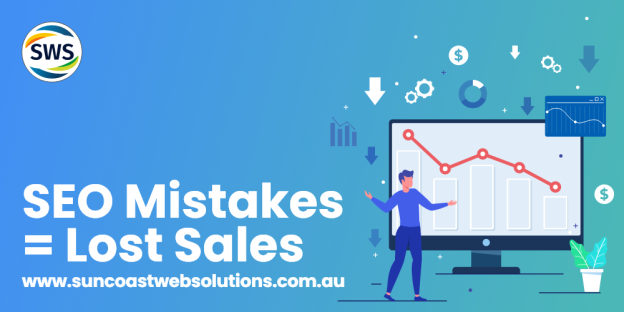Google August 2024 Core Update Rolls Out: What You Need to Know

 16th Aug, 2024
16th Aug, 2024
Each year, we see multiple Google updates which can affect website rankings and how sites are indexed. Google’s constantly making algorithm changes which have always been important in shaping the SEO world. These updates, like the Panda update in 2011 and the more recent BERT and MUM updates, aim to consistently improve search quality and user experience.
The latest of such updates is the August 2024 core update, launched on August 15, 2024. This without a doubt continues this tradition. This major update focuses on prioritizing high-quality content and hopefully reducing the visibility of low-value, SEO-focused material. For webmasters and content creators, this significant change does really place higher importance on the need for genuine, user-focused content over purely optimized pages designed to rank. This is one ethos that Google has always had when it comes to content.
Understanding these changes ensures that everyone involved in your website is maintaining or improving your website’s performance in search results. Engaging with professional internet marketing services can help you get a great understanding and solution on how to navigate these updates effectively.
Understanding Core Updates: A Deep Dive into Google’s Algorithm Changes
What Is a Core Update?
A core update is a seen as a massive change to Google’s search algorithms and systems. Unlike minor updates that may focus on specific issues or improvements, these larger core updates will likely change the entire search engine’s functionality. These updates aim to enhance the quality of search results by refining how Google evaluates and ranks content. The purpose is to ensure users receive the most relevant, high-quality information in response to their queries.
When Was the August 2024 Core Update Released?
Google launched its August 2024 core update on August 15, 2024. This update marks another step in Google’s ongoing efforts to optimize its search algorithms for better user experience. The rollout began in mid-August and is expected to take up to one month to complete. This timeline allows the changes to be fully integrated across Google’s extensive index.
Why Is the Implementation Period Important for SEO?
The implementation period of a core update like the August 2024 release spans approximately one month. During this time, webmasters and content creators might observe fluctuations in their search rankings as the new algorithm takes effect. Such updates often lead to big changes in the current SEO strategies being used, requiring site owners to adapt quickly.
Key aspects of this implementation period include:
- Monitoring: Continuous observation of site performance ensures any negative impacts are identified early.
- Adaptation: Adjusting content strategies based on observed changes helps maintain or improve rankings.
- Evaluation: Regularly assessing website metrics provides a great ‘looking glass’ into how well your content aligns with Google’s new criteria.
By understanding these elements, you can navigate more efficiently through the complexities introduced by Google’s core updates. This awareness is crucial for maintaining visibility and relevance in an ever-evolving digital landscape.
Key Objectives of the August 2024 Core Update
Google’s August 2024 core update showcases Google’s commitment to improving how search results are curated, with a renewed focus on prioritizing high-quality content. This update is designed to ensure that users receive the most relevant and valuable information possible. Here’s what you need to know:
Prioritizing High-Quality Content
Google aims to elevate content that genuinely benefits users. High-quality content refers to material that is:
- Informative and well-researched: Articles, blogs, and webpages that provide in-depth information backed by credible sources.
- Engaging and readable: Content that is easy to read, with clear structure and engaging language.
- Original and unique: Content that offers fresh perspectives or new information not found elsewhere.
To align with this update, businesses can adopt strategies such as the Ranch-style SEO content strategy, which emphasizes creating comprehensive, high-quality content rather than focusing solely on SEO tactics.
Addressing Low-Value SEO-Focused Material
Low-value content often prioritizes SEO tactics over user value. This type of material typically includes:
- Keyword-stuffed articles: Pages filled with repetitive keywords but lacking substantive information.
- Thin content: Webpages with very little useful information, created primarily to rank in search results.
- Duplicate content: Copy-pasted or lightly rephrased content from other sources without adding value.
Google’s update specifically targets these practices by demoting such pages in search rankings. Practical examples include:
A website previously ranking high due to keyword stuffing might see a significant drop if its content fails to provide meaningful insights or value.
The Crucial Role of Content Value
Content value plays a pivotal role in determining website ranking under the new algorithm. Valuable content typically exhibits characteristics such as:
- Relevance: Directly addresses user queries and needs.
- Authority: Authored by knowledgeable experts or reputable sources.
- User engagement: Encourages interaction through comments, shares, or likes.
The update underscores the importance of understanding the audience’s needs and crafting content accordingly. Websites that consistently offer high-value information are more likely to see improved rankings.
This move towards prioritizing quality over optimization signals a paradigm change in SEO strategies. It encourages webmasters and content creators to focus on delivering genuine value to their audience, a move that aligns closely with the principles outlined in Google’s Helpful Content Update.
In light of these changes, it’s also crucial for news and journalistic platforms to adapt their approach. A recent report by ACCC highlights the profound impact digital platforms have had on news and journalistic content. As such, understanding these dynamics will be vital for any online platform looking to maintain its relevance and authority post-update.
Impact on Smaller and Independent Websites: A Positive Shift?
The August 2024 core update aims to provide significant advantages for smaller websites and independent publishers. Google’s emphasis on surfacing useful content means that high-quality, niche information from smaller entities can now compete more effectively with larger, more established sites. This acknowledges the value that independent publishers bring to the web, offering unique perspectives and specialized knowledge.
Real-Life Feedback from Content Creators
Google’s decision to focus on this change stems from the feedback received from content creators who expressed concerns about previous updates. Many smaller websites reported challenges in maintaining visibility despite offering substantive, high-quality content. Listening to these voices, Google incorporated their insights to ensure that quality content from diverse sources isn’t overshadowed by SEO-heavy material with less intrinsic value. This situation highlights the importance of content creation as a key factor in online visibility.
Importance of Diversity in Search Results
Diversity in search results is needed for a well-rounded user experience. By giving prominence to smaller and independent websites, Google enriches its search results with a wider range of viewpoints and specialized information. Users benefit from discovering content that may not be available from mainstream sources, fostering a more inclusive and comprehensive web experience.
- Smaller Websites: Often provide highly specialized information that may not be covered by larger sites.
- Independent Publishers: Contribute unique perspectives and original research that enhance the richness of search results.
This update represents a meaningful step toward leveling the playing field for all webmasters, regardless of size or resources. It aligns with Google’s mission to ensure users receive the most relevant and valuable information available, irrespective of the source’s scale. However, this shift also underscores the ongoing impact of digital platforms on news and journalistic content, emphasizing the need for balance between SEO practices and genuine content quality.
Adapting Your Content Strategies to Align with Google’s Emphasis on User Value Post-Update
Official Guidance Provided by Google Search Central
Google Search Central has released comprehensive guidance for webmasters seeking to adapt to the August 2024 core update. The primary focus is on creating content that is genuinely helpful and unique, moving away from strategies that solely aim to manipulate search engine rankings. Key recommendations include:
- Crafting High-Quality Content: Ensure your content provides substantial value, answering users’ queries comprehensively.
- Maintaining Originality: Focus on originality in your articles, avoiding duplicated or rehashed information.
- Enhancing User Experience: Improve site usability and engagement factors such as loading speed, mobile friendliness, and intuitive navigation.
Practical Strategies to Align Your Content with Google’s Renewed Focus on User Value
Adapting your content strategy involves several actionable steps:
- Conducting a Content Audit: Regularly review your existing content to identify low-performing pages. Update or remove outdated information.
- User-Centric Approach: Prioritize the needs and interests of your audience by conducting surveys or analyzing user behavior through tools like Google Analytics.
- Improving E-A-T (Expertise, Authoritativeness, Trustworthiness): Cite reliable sources, showcase author credentials, and include transparent contact information.
Best Practices for Maintaining or Improving Rankings After the August 2024 Core Update
Key takeaways from successful websites that have thrived after previous core updates include:
- Consistent Quality: Websites focusing on high-quality and informative content tend to maintain or improve their rankings.
- Engagement Metrics: Pages with higher engagement rates (e.g., time spent on page, lower bounce rates) perform better in search results.
- Comprehensive Coverage: Cover topics in-depth rather than producing thin content spread across multiple pages.
Actionable Tips to Implement Immediately for Better Visibility in Search Results:
- Content Refreshment: Regularly update your existing content to keep it relevant and valuable.
- Schema Markup: Implement structured data to help search engines understand your content better and potentially earn rich snippets.
- Multimedia Integration: Use images, videos, infographics, and other multimedia elements to enhance user engagement and satisfaction.
By following these strategies and best practices, you can align your website’s content with Google’s emphasis on user value post-update. Keeping an eye on successful websites’ approaches can provide insights into what works best under the new algorithm changes.
Monitoring Changes in Search Rankings: Tools, Methods, and Metrics That Matter After the Update
Tracking site performance post-August 2024 core update over the next 60 days or so is important when it comes to understanding its impact on your search rankings. Monitoring allows you to swiftly identify any shifts and adjust your strategies accordingly to maintain or improve your site’s visibility.
Importance of Tracking Site Performance
- Real-time insights: Regular monitoring provides timely data on how the update affects your website, enabling you to make informed decisions.
- Trend analysis: Understanding patterns in traffic and ranking changes helps you identify what works and what doesn’t.
- Competitor benchmarking: Keeping an eye on competitors’ performance can offer insights into industry-wide impacts and opportunities for improvement.
Recommended Tools for Effective Monitoring
Several tools can assist in tracking changes in search rankings:
- SEMrush: Offers detailed analytics on keyword rankings, site audits, and competitive analysis.
- Ahrefs: Known for its robust backlink analysis capabilities and rank tracking features.
- Google Search Console: Provides essential data directly from Google, including indexing status, search queries, and errors.
- Moz Pro: Useful for keyword research, site audits, and tracking ranking fluctuations.
- Manual Checks: Complement tool-based analyses with manual checks of SERPs to get a more nuanced understanding of ranking positions.
Interpreting Metric Analysis Results: Adjusting Strategies Based on What You Find Post-Update
Understanding the data that is presented will often make the difference between keeping your sites great rankings or losing them. Here are key steps to interpret metrics from your SEO analytics:
- Identify significant drops or spikes in traffic or rankings. These could indicate areas affected by the update.
- Analyze top-performing pages to understand what content aligns with Google’s new criteria.
- Look for patterns in underperforming pages to pinpoint common issues such as thin content or poor user engagement.
Common Trends to Look Out for When Analyzing Your Search Rankings Post-Update
Certain trends often emerge after a core update:
- Fluctuations in keyword rankings: These may stabilize over time but indicate initial impact areas.
- Changes in organic traffic sources: Shifts here can reveal how different content types are performing.
- Variations in user engagement metrics: Bounce rate, session duration, and pages per session provide clues about content quality from a user perspective.
How to Pivot Your SEO Strategy Based on These Insights Without Compromising Qualitxy
Adjusting your strategy based on these findings is essential:
- Enhance high-performing content by adding more depth and value through additional information or multimedia elements.
- Revise low-performing pages, focusing on improving content quality, updating outdated information, and enhancing readability.
- Diversify content formats, incorporating videos, infographics, and interactive elements to engage users better.
By closely monitoring these aspects using the recommended tools and methods, you can effectively navigate the changes brought by the August 2024 core update while maintaining a focus on delivering high-quality content that resonates with users.
Anticipated Shifts in SEO Strategies Due to The Core Update: What Professionals Need To Know Going Forward
Google’s August 2024 core update introduces significant shifts in the SEO landscape. For professionals aiming to stay ahead, understanding these changes is crucial.
The Evolving Landscape of SEO
The August 2024 core update reflects a broader trend towards prioritizing high-quality, user-centric content. This shift means:
- Reduced emphasis on purely SEO-focused content: Low-value material designed solely to manipulate search rankings finds less favor. Google aims to reward genuinely useful and informative content.
- Increased visibility for smaller and independent websites: By elevating the presence of diverse voices, the update fosters a richer user experience.
Preparing for Future Updates
Learning from this rollout can better equip you for future changes. Key strategies include:
- Create original, well-researched material that addresses user needs directly.
- Avoid keyword stuffing and instead integrate keywords naturally within valuable content.
- Ensure your website is easy to navigate with a clean design.
- Enhance mobile usability as Google continues to prioritize mobile-first indexing.
- Engage with Feedback:
- Pay attention to feedback from users and other stakeholders.
- Regularly update content based on constructive criticism and evolving best practices.
- Diversify Content Types:
- Incorporate different formats like videos, infographics, and interactive elements.
- This diversification can help engage different segments of your audience effectively.
- Monitor and Adapt:
- Utilize tools like SEMrush or Ahrefs to track performance metrics.
- Adjust your strategies based on data insights without compromising the quality of your content.
By staying informed about these shifts and adapting your strategies accordingly, you can maintain or even improve your site’s search rankings. Keeping an eye on industry trends and being proactive in implementing changes will position you well for ongoing success in the dynamic field of SEO.
Final Thoughts On Adapting To Ongoing Changes In Google’S Search Algorithms And Maintaining A Focus On Quality Content
Navigating Google’s algorithm changes requires a commitment to quality content and user-focused strategies. The August 2024 core update emphasizes the importance of genuine, high-quality material over superficial SEO tactics.
Key Takeaways:
- Emphasis on High-Quality Content: Google’s focus remains steadfast on delivering value through well-researched, original, and helpful content.
- Adaptability: Stay informed about updates via Google Search Central and adjust your strategies accordingly.
- Diversity: Highlight diverse perspectives and voices to enrich user experience.
Real-life examples show that websites maintaining a user-first approach tend to sustain or improve rankings post-update. Ensuring your content aligns with Google’s priorities can safeguard your site against adverse impacts from future updates.
FAQs (Frequently Asked Questions)
What is the significance of the August 2024 core update?
The August 2024 core update is a pivotal change in Google’s algorithm that emphasizes high-quality content and aims to improve search results for users. It marks a shift in how websites are evaluated, particularly benefiting those that prioritize valuable content over low-value SEO-focused material.
How does a core update affect smaller and independent websites?
This core update is designed to benefit smaller and independent websites by promoting useful content. Google has taken feedback from content creators into account, aiming to enhance diversity in search results which can lead to a more well-rounded user experience.
What strategies can webmasters implement post-update to maintain or improve their rankings?
Webmasters should focus on creating high-quality, user-centered content that aligns with Google’s renewed emphasis on content value. Best practices include regularly updating existing content, ensuring relevance, and following official guidance from Google Search Central.
What tools and methods are recommended for monitoring changes in search rankings after the August 2024 core update?
To effectively monitor changes in search rankings, it is advisable to use tools like SEMrush and Ahrefs alongside manual checks. Tracking site performance post-update is crucial for understanding the impact of the changes and adjusting strategies accordingly.
How should SEO professionals prepare for future updates following the August 2024 core update?
SEO professionals should stay informed about evolving SEO trends and adapt their strategies based on lessons learned from the August 2024 core update. This includes focusing on quality content creation and being ready to pivot strategies as necessary.
What are some key takeaways for adapting to ongoing changes in Google’s search algorithms?
Maintaining a focus on quality content is essential in adapting to ongoing algorithm changes. Websites should continually assess their content’s value, engage with user feedback, and implement actionable tips derived from successful case studies after previous core updates.
Also, keeping an eye on industry trends and staying updated with the latest SEO best practices is going to be a contributing factor in your websites ongoing success. This allows for timely adjustments to website structure, metadata, and keyword optimization. Furthermore, diversifying traffic sources by investing in social media marketing or email campaigns can help mitigate the impact of algorithmic fluctuations on organic search rankings. Ultimately, a proactive approach to staying informed and adaptable is key in navigating the ever-evolving landscape of search engine algorithms.
we are your one-stop internet marketing solution on the sunshine coast!

 07 5479 3888
07 5479 3888









